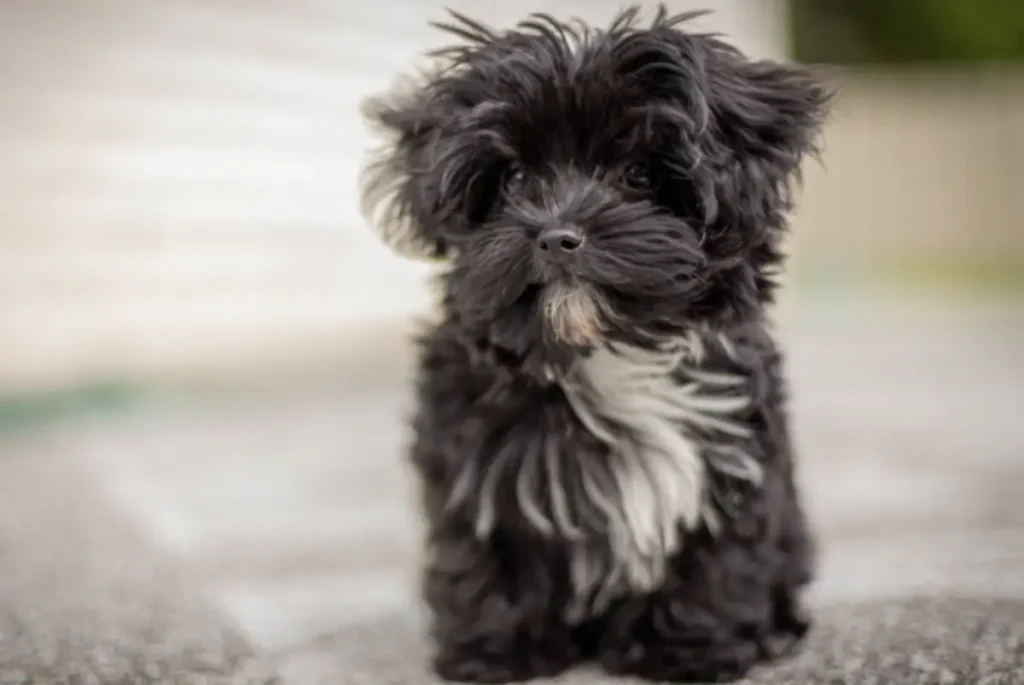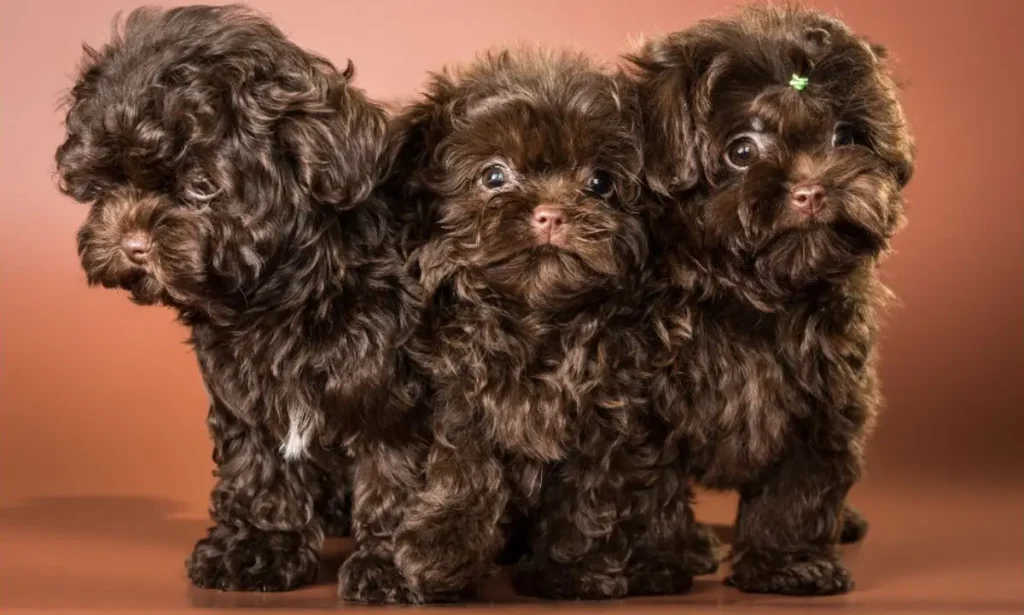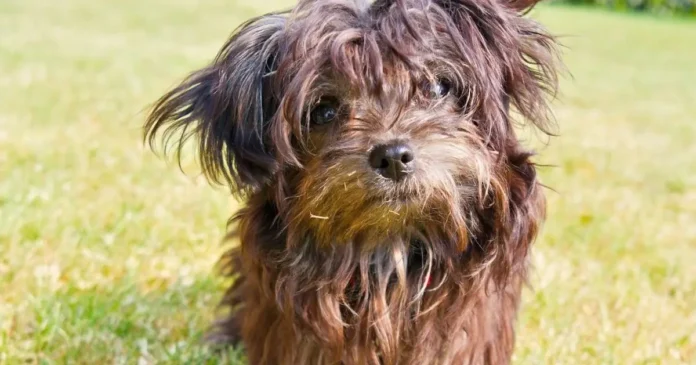The Russian Bolonka puppy is also known as Bolonka Zwetna in Russia, an attractive little companion who wins the heart with its drunken fur and lively character. This dog breed is not only loyal and loyal, but also unstable and always ready for fun. Russian Bolonka puppy radiates contagious positive energy that always brings a smile to the face. With his loving nature, he is an ideal everyday companion and enriches the owners in any way. Keep reading to search for more fun facts about this sweet breed.
History of the Russian Bolonka Puppy
In Russia, the selective breeding of the Russian Bolonka puppy began in the early 1950s. The catalyst was a desire for a domestic dwarf grass. This breed became popular after World War II. However, legal imports of dogs from abroad under Soviet rule were hardly possible. Therefore, people who wanted a small or dwarf dog had to be made with breeds available in Russia.
The forefront of the Russian Bolonka is Bolonka Franzuska, already placed as a fellow and living jewelry in a high society in the early 1700s. The latter, called “lapdog” in French, perhaps came to the country through close contact between French and Russian nobility. The story is that King Louis XIV has said that this little white dog is given to Russian Zar.
The Russian Bolonka puppy was developed with breeds such as Peking, Shih Tzu, Bologneus and Lhasa Apso. This unique breed is also called “tsvetnaya bolonka”, which means “colorful lapdog”, and refers to the different coat colors

Russian bolonka puppy symptoms
Physical properties
The Russian Bolonka puppy is a small, compact dog, with a height of 20 to 28 cm and weighs from 2 to 5 kg. The coat is dense and curly, one of its most excellent properties. It can be of different colors, such as white, black, brown, gray and gold. It has a long curly tail with big and expressive eyes. With a life expectancy of 12 – 16 years, Russian Bolonka is above average compared to other dog breeds.
Personality and temporary
In addition to his attractive appearance, the Russian Bolonka puppy has a friendly and loving nature that makes him an excellent partner for families. They are intelligent and easy to exercise, although they can sometimes be somewhat stubborn. They prefer to live with their owners and require frequent attention and love.
Bolnka is considered a friendly, loving and sociable dog. Bolnak is a great companion and is committed to being a family part with children. They are intelligent and easy to exercise, although they can sometimes be somewhat stubborn. They prefer to live with their owners and require frequent attention and love.
Exercise and training
The Russian Bolonka puppy likes almost any activity with the caregiver, except for the causes after the meal. The most important thing is that he can run and play with the people around him. Despite his little legs, he is a tornado with living nature and commendable endurance. He enjoys the Game of Nature’s Tour and brings sticks and balls. He also likes corner signs like agility or click training. At home, however, he shows his bullet and cuddly face. He can never get enough for his caregiver.
Despite the relative mobility, which requires one or two hours of fun a day, Russian Bolonka can also live in a small apartment. It doesn’t need much space at home, as it likes to lie near the owner’s feet.
Exercise and basic command learning are usually no problem for this hard -working and affiliated sweet friend. After achieving proper socialization, he can live very well with cats and other livestock.

Russian Bolonka Puppy of Caring and Grooming Tips
In addition to daily walks and cutting, you also need to invest time in taking care of this cute little ball. Despite its length, the fur of the Russian Bolonka puppy requires minimal care. Brushing it every other to the third day is enough to prevent touch and remove dust and dirt. You should regularly inspect and clean your eyes, ears and nails. This way you can prevent diseases or infections or detect them quickly.
Bolonka’s teeth are special attention. Check them for foreign bodies and tartar. Because of which toothache can be severe. Teeth, swollen gums or bad breath are all indicated that something is wrong. In this case, you can take your dog to the veterinarian as soon as possible to find the reason.
Russian Bolonka puppy is fully satisfied, with good care, sufficient outdoor training and much love and attention. It brings great love and good luck to both beginners and experts, whether single, family with children, tenants in a small apartment or residents in a luxurious mansion.
Health and breeding
Although it is not recognized by FCI, the breeding of Russian Bolonka puppy is widespread outside Russia. Therefore, it should not be difficult to find a good breeder relatively dense. There are many of these dogs in shelters looking for home, so it’s worth watching.
If you want a puppy, you should buy it from a serious and professional breeder. These breeders are not interested in quick money, but are in favor of dogs and health. A cheap agreement without papers is often a network, as the veterinarian shines the bills. So it is better to invest directly in a healthy dog. This is the only way to prevent genetic diseases, such as hip dysplasia.

However, your dog may be damaged or contracted an infection or other illness. The sooner you discover these diseases, the better recovery of recovery. Good care, art-fitting ownership and regular check on the veterinarian are required. Vaccination can also prevent many diseases. It is best to ask breeders and veterinarian for information on recommended vaccines.
Diet and feed
Proper dietary nutrition is necessary for the dog’s health, so make sure the food you feed is suitable and arts -appropriate. Age, weight and activity level are all factors for considering choosing food. Separate threads for puppies, adults and senior dogs are not just marketing of manufacturers.
Russian bolonka puppy requires high meat content and sufficient amounts of minerals and nutrients. In addition, it should have no artificial additives, flavors, coloring or preservatives. In nine to ten months, the Russian Bolonka puppy is already adult and adult can start eating food. Not only the food content is changed, but also the number of foods per day.
A puppy should be eaten five or six times a day due to the innate tendency for hypoglycaemia. On the other hand, an adult dog is enough with two or three meals. The food structure is correct if it contains about seventy percent of the meat, twenty -five percent of the vegetables and only five percent grain. If this is the case, you do not need to give it vitamin and mineral supplements. After all, the surplus of some nutrients is the same as a deficiency.
After eating, the dog should relax to allow digestion and prevent feared gastric torsion. The dog should never walk or play with the whole stomach.

FAQ’S
What is the Price of a Russian Bolonka Puppy?
Russian Bolonka puppies are rare breed therefore they cost between $2,000 and $5,000.
It may also depends on the breeder and bloodline.
Conclusion
The Russian Bolonka puppy is an adorable and loving companion. It a perfect for you if you are looking for a small, hypoallergenic, and charming dog breed.


